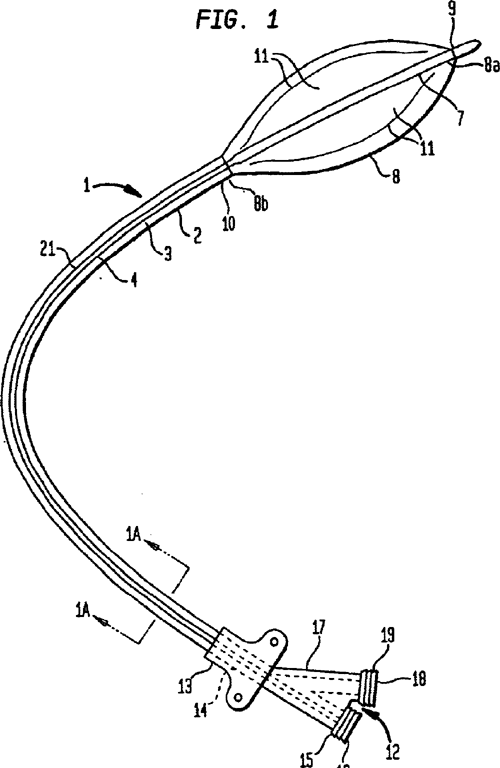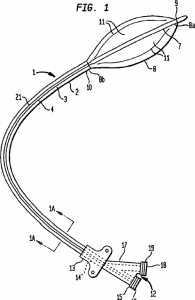
Balloon Catheter Use Predicts Functional Independence in Mechanical Thrombectomy
25 February 21
The use of a Balloon Guided Catheters
Catheters are very important and serve very specific purposes in the medical field. A balloon catheter is one of many kinds of a catheter. You can also say that it is a ‘soft’ catheter. The design for a balloon catheter includes a balloon that inflates at one of the catheter.
A balloon catheter can help in catheterization processes for enlarging thin and narrow spaces that happened to house in a person’s body. They also help in making difficult operating places visible.
Using a balloon catheter is not very different from using a regular catheter. The operator is simply supposed to position the catheter inside the desired area and inflate the balloon attached with the catheter. Furthermore, when the procedure ends the operator can easily deflate the balloon attached with the catheter. Then they can easily remove the catheter from the narrow passage.
Common Uses of Balloon Catheters
Catheters are very important when performing complex surgeries that include a heart or brain. They majorly help by playing a significant role in achieving the desired results. The use of balloon catheters can aid in many medical procedures.
Some of the most common uses of balloon catheters include angioplasty. Angioplasty is a common name for balloon septostomy. The performance of this operation takes place with the help of cardiac catheterization.
Tuboplasty is another medical procedure that involves catheterization via the uterine passage. Similarly, pyeloplasty is a procedure that involves placing inflatable balloon catheters for positioning stents inside the heart. They achieve this procedure by using the cystocopic trans-vesicular method. Hence, the use of balloon catheters becomes inevitable because they need to create a small balloon-sized space to perform these activities.
What is the use of Balloon Catheters in Mechanical Thrombectomy?
Before getting to know the use of balloon catheters in Mechanical Thrombectomy, we need to understand what a mechanical thrombectomy is. The following details will help you understand its functions and cause.
Understanding Mechanical Thrombectomy
We often hear stories about people getting a stroke caused by a blood clot in a vessel. Although a brain or heart stroke is something that is recoverable with latest technologies, you need to differentiate between the choices for treating heart stroke.
Modern-day science has come up with new technology for treating heart-related problems such as strokes. Technology has a new name for it, called mechanical thrombectomy. Scientists and operators have another name for it and that is endovascular therapy.
Using Balloon Catheters in Mechanical Thrombectomy
In this procedure, balloon catheters play a significant part by preparing a threaded version of the catheter and the blood vessel that leads to the stroke area. It approaches the area that has the blood clot.
When the catheter reaches the desired area its starts to inflate and helps the operator in grabbing the clot and removing it. After removing the clot the blood flow retains to original movement thus making the patient move towards recovery. This dramatically progresses the whole situation too.
This procedure involves a minimalist amount of invasion. This means that the incision made during the process is of very small size. Moreover, this type of surgery can take place 24 hours after the stroke symptoms occur.
So by using mechanical thrombectomy with the help of balloon catheters significantly reduces time consumption which allows the operators to treat more patients in less time and with great success rates. This is the safest, efficient, and very effective treatment for strokes that shows visible outcomes in no time.
Using Balloon Catheter for Predicting Functional Independence in Mechanical Thrombectomy
The use of mechanical thrombectomy has become an average treatment for taking care of patients that suffer from a blockage in large blood vessels. Although this matter remains under debate because the operators are unable to decide on an effective method that takes less time and is less painful for the patient.
It is a commonly known fact that endovascular treatment for strokes can be done via twelve kinds of different procedures. And using balloon catheters for guiding endovascular treatment of stroke is one example of performing neuro-interventional processes.
Using a balloon guiding catheter is a very supportive way of using average catheters for placing them in the interior of the carotid arteries. It is common for the carotid arteries to have the presence of stenosis in very extensive amounts.
Process Seizes
When this happens, the balloon catheter in the process seizes the flow of blood during the mechanical thrombectomy in order to remove the clot.
The use of a balloon guiding catheter facilitates the whole mechanism by two ways. First it helps in reducing the risk of causing distal clot embolization. Secondly, its helps in decreasing the artery pressure in the system that impacts the clot by enhancing the effect of using retrievers for stents during the thrombectomy.
A recent study shows that using balloon catheters with guiding wire is the most feasible way of treating patients going through mechanical thrombectomy. Although there are some limitations related to this procedure, it is still the most effective way of performing successful clot removal surgeries.
Moreover, the use of balloon guiding catheter for Predicting functional Independence in mechanical thrombectomy is a next level technology. One of the limitations that relate to these catheters includes the variation in the baseline and the level of change in the BGC and non-BGC groups. This gives the foundation for debating on this matter.
Factors Influencing the BGC Output
The major factors that affect the BGC output get a contribution to the reduction of emulation. This happens in the distilled territories by gaining a halt on the flew of the blood. The successful way of doing thrombectomy helps in decreasing the pressure in the arteries. This ,in turn, impacts the clot.
When the clot impact reduces it increases the positive chances of first pass effect. The greater first pass effect, the greater will be the surety that there will be fewer attempts made during the impacts in doing thrombectomy. This means the reduced risk of complexities during the procedure like the dissection of the vessels or while performing perforation.
Another added benefit of first-pass effect is that it helps in fast restoration of the stopped blood flow during the procedure. It uses the trans-radial femoral access for the deployment of the balloon guiding catheter. It means that it allows access to the various sites while reducing the complications substantially. Operators can easily perform random controlling trials. This can help them in evaluating the benefits of BGC in different patients suffering from atrial vessel blockage.
Using this specific catheter for catheterization is an ideal solution for many different problems in different patients. Moreover, it is a direct approach for making out a solution in problems that revolves around blocked blood vessels.
Summary
We have the entire picture that using catheters in complex procedures related to the heart and brain requires very specific and compact tools. It is important and helpful to use balloon catheters when performing blood vessel occultation in Mechanical thrombectomy. It is actually a new way of making incisions.
This directly approaches the affected areas in order to reach the clotted artery in less time while causing less damage. This reduces the intensive care time and aids in faster recovery of the patients. They are also helping in detecting patterns for deriving the arteries that get most affected by strokes.
It also helps in predicting functional independence during mechanical thrombectomy. This can save lives dramatically and increasing the medical efficiencies by tenfold.
For More Information, Contact Us Today!



